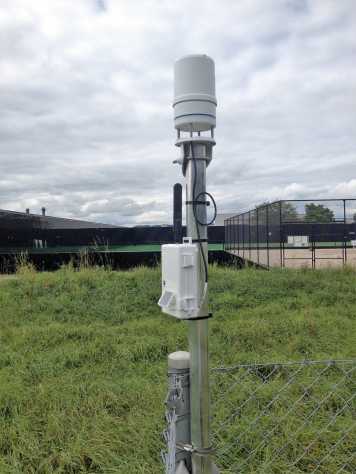Reports
ETH MSc student research addresses SDGs
After attending the NEWAL winter school in Ghana in 2020, three MSc students from the ETH Institute of Environmental Engineering focused their research on topics relevant to West Africa. Their theses are as follows:
- Dennis Eberli: external page Spatial Analysis of Climatic Conditions for Cocoa Cultivation in West Africa: Assessing Current and Future Suitability
- Sabine Hain: external page Developing an integrated methodology for assessing risk and impact of illegal alluvial mining-related environmental stressors in the Pra river basin, Ghana
- Thierry Hohmann: external page Review of Early Warning Dissemination in Media and Assessment of Flood Early Warning Systems in Media A case study in West Africa
SAS4SD at the IUGG General Assembly in Canada, July 2019.
Peter Molnar presented the poster "Science Action for Sustainable Development in Secondary Schools in Ghana" at the International Union of Geodesy and Physics (IUGG) session on INNOVATION IN GEOSCIENCE EDUCATION, OUTREACH AND CITIZEN SCIENCE. The poster can be viewed Download here (PDF, 371 KB).
TAHMO station at ETH Hönggerberg

The external page Trans-African Hydro-Meteorological Observatory TAHMO aims to install about 20,000 modern automatic weather stations across Africa. The TAHMO network is built with a new all-in-one weather station from METER called external page ATMOS 41. The station has 12 embedded sensors with no moving parts, a solar powered logger, and a GSM module for data transmission. It is ideally suited for climate monitoring in remote locations in Africa and elsewhere.
One TAHMO station was set up at the Hoenggerberg Campus of ETH Zurich as part of SAS4SD. We conducted a first-order analysis of its performance in the first 6 months after installation, as compared to a weather station of the ETH Zurich IAC (Institute of Atmospheric and Climate Science) which consists of traditional well-tested sensors typically used by meteorological services world-wide. We analysed air temperature, precipitation, wind speed and direction, relative humidity, atmospheric pressure, and solar radiation, as these are the main variables used in hydrological studies. The test was conducted on 10-min time resolutions.
For more information consult the Download comparison report (PDF, 11.9 MB)
Current station data can be seen external page here